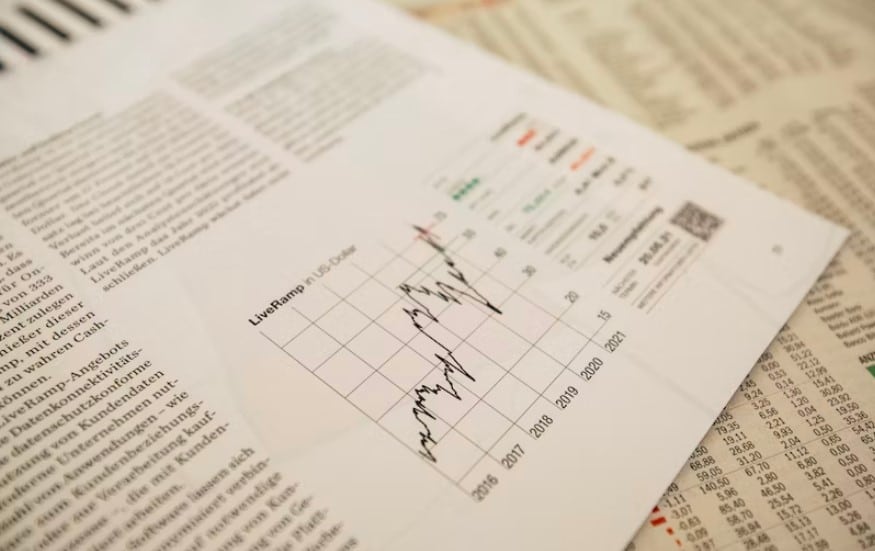When we talk about financial risk management, the mind wanders to bookkeeping, accountants, and analysts…right?
However, in today’s ever-evolving business landscape, financial risk management has emerged as an important foundation for crafting effective and sustainable marketing campaigns.

If you think about it, risks can emerge in so many different ways. Examples include fluctuating market conditions, shifts in consumer behavior, and unforeseen economic events.
All of these situations can derail even the most creative marketing campaigns!
This is why businesses need to concentrate on building sustainable marketing campaigns. Sustainable marketing is resilient, adaptable, and designed for long-term success.
To achieve this, grounds of strong financial management are a must.
In this blog post, we’ll help you get a better understanding of why this is so important and how to go about it.
Understanding financial risk management and the role of software
Before we delve deeper into the relationship between financial risk management and sustainable marketing, we first need to understand financial risk management.
Financial risk management is the practice of protecting economic value. It involves managing exposure to risk, particularly credit and market risk. It’s a systematic approach to identifying, analyzing, evaluating, and treating the potential financial consequences of business decisions.
From setting risk tolerance guidelines to executing specific strategies to mitigate financial losses, financial risk management involves a broad range of activities.
Financial risk management software—a critical tool
In today’s digital age, financial risk management software has become an indispensable tool for companies that want to streamline and enhance their risk management processes.
Although features differ based on the solution you choose, some of the functionalities you can expect include:
- Data aggregation and analysis: Collecting and organizing huge amounts of financial data to identify risk exposure.
- Real-time monitoring: Tracking financial positions in real-time so you can spot potential risk events quickly and easily.
- Risk modeling: Using statistical models to predict potential outcomes and how sensitive assets are to different risks.
- Regulatory compliance: Making sure that your business adheres to the relevant financial regulations that are in place, which can impact your reporting requirements.
- Scenario analysis and stress testing: Examining how different financial scenarios can impact your business so you can anticipate and prepare effectively.
The intersection of financial risk management and sustainable marketing
The path to success often has a lot of potential financial pitfalls en route. Financial risk management acts as your strategic compass; it will guide your marketing team through uncertain terrains so that you can identify, analyze, and mitigate risks that could stop you from achieving your objectives.
To understand this, you really need to move away from viewing financial management as merely budget allocation. Instead, it is the very spine of your strategic marketing efforts.

At the core of this practice, there are four principal types of financial risks:
- Market: Market risk, also known as systematic risk, is the volatility faced due to external economic factors that can affect consumer behavior and impact the overall success of marketing campaigns. Currency fluctuations, for instance, can alter the cost-effectiveness of international marketing strategies, potentially affecting pricing and profitability.
- Credit: Credit risk involves the potential for loss due to the failure of customers to fulfill their payment obligations, which is particularly relevant when marketing strategies offer products or services on credit terms.
- Operational: Operational risk can cause losses due to internal failures – i.e. system breakdowns or human error. This can then disrupt your marketing operations and lead to financial loss.
- Liquidity: Lastly, liquidity risk is all about the availability of funds to meet immediate obligations without incurring substantial losses. This is essential to ensure you can continuously roll out your marketing activities.
Illustrating these risks with examples
Imagine that you’re launching a global product. Now, let’s look at some of the risks mentioned above and explain how they could derail your marketing efforts for your global product launch.
-
Failing to hedge against currency market risk
So, you plan an amazing international marketing campaign. However, you didn’t hedge against currency market risk. All of a sudden, the dollar starts to strengthen against other currencies.
The outcome = your competitive pricing edge is reduced in overseas markets.
-
Facing operational risks
Or, consider a scenario where operational risk materializes due to a cyber-attack! A data breach occurs that compromises your preferred online advertising platform.
The outcome = a halt in ad deliveries and a consequent loss of revenue and customer trust.
-
Liquidity issues could also crop up
Moreover, liquidity issues could arise if your large-scale marketing campaign is heavily front-loaded with advertising spending.
The outcome = A cash-flow shortage that might impede other business operations or the ability to respond to market changes swiftly
These scenarios help you to see the clear link between financial risk management and effective marketing planning.
Sustainable marketing campaigns—a strategic approach
Sustainable marketing is an approach that not only considers the immediate appeal and success of a campaign but also its long-term impact on customer relationships, society, and the environment.
It nurtures trust and loyalty, which are indispensable for long-term success and the growth of your business. It reflects a commitment to continually delivering value to your customers, without depleting environmental or social resources.
Why is sustainable marketing so important?
Consumer awareness and corporate accountability are at all-time highs. If you want to thrive in the long term (and why wouldn’t you?), these two elements are a must for your business.
This shift toward sustainability has been propelled by the growing consumer preference for brands that demonstrate social responsibility and follow ethical practices.
So, let’s look at why sustainable marketing is so vital:
- Consumer expectations and brand loyalty: Today’s consumers are more informed and empowered than they ever have been! They actively look for brands that not only meet their immediate needs but align with their values. Sustainable marketing campaigns resonate deeply with this demographic, fostering a sense of community and shared purpose. If you focus on long-term relationships over one-time sales, your campaigns will build a loyal customer base.
- Risk mitigation and longevity: When you prioritize ethical and environmental considerations, you make sure you don’t end up following any practices that might lead to negative publicity or legal repercussions down the line.
- Innovation and competitive advantage: Embracing sustainable marketing often demands innovation, which can become a source of competitive advantage. It encourages you to think creatively about how you can deliver value; this can lead to new products, services, and marketing methods that set your brand apart.
- Regulatory compliance and future-proofing: Governments around the world are tightening regulations on environmental impact. So, sustainable marketing campaigns help to future-proof your business against any upcoming regulations.
How financial risk management underpins the sustainability of your marketing efforts
Financial risk management ensures that the economic resources allocated to marketing are used judiciously, with a clear understanding of the risks and returns involved.
It gives you a framework so you can make informed decisions. Ultimately, you’ll have the ability to safeguard your company from financial volatility that could undermine your marketing campaigns and your company’s reputation.
So, let’s take a look at some of the different steps involved:
-
Budgeting
The process begins with budgeting—establishing a financial plan for marketing that aligns with strategic goals and risk appetite.
This includes allocating funds to different marketing channels and initiatives based on their expected return on investment (ROI) and the risk profile of each channel.
Budgeting is an exercise in setting priorities and anticipating possible changes in the market that could affect costs or outcomes.

-
Forecasting
Forecasting is the next critical component. This involves predictions about market trends, consumer behavior, and the financial landscape that will impact the performance of marketing strategies.
Effective forecasting can help businesses prepare for future challenges and opportunities, making adjustments to their marketing strategies to maintain their effectiveness over time.
-
Resource allocation
Resource allocation, a vital aspect of financial risk management, must be agile enough to respond to both forecasted and unforeseen changes in the market.
This not only entails the initial distribution of funds but also the ongoing management of marketing resources so you can ensure they’re focused where they’ll be the most effective.
By allocating resources dynamically in this way, you can maintain the efficiency and impact of your marketing campaigns even when external conditions fluctuate.

Effective financial risk management is a must for sustainable marketing
Although financial risk management and marketing may seem like two diverse departments within a business, they’re very much linked.
For any business to achieve long-term success, it all needs to be about sustainability, and, of course, marketing falls into this.
Nevertheless, if you fail to manage your finances effectively and you don’t plan for risks on the road ahead, how can your business achieve this sustainability? It’s only with a foundation of financial risk management that sustainable marketing can be achieved.








